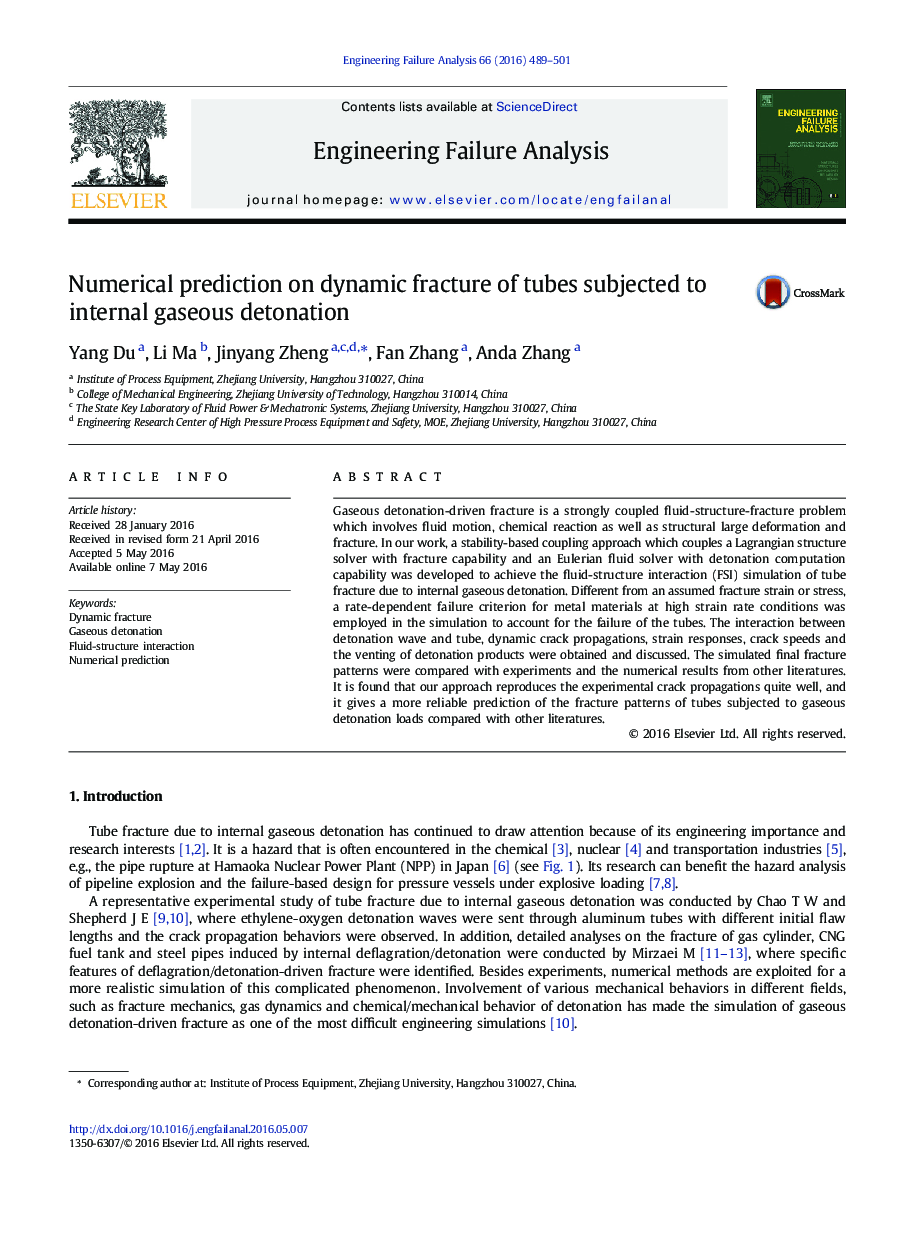| Article ID | Journal | Published Year | Pages | File Type |
|---|---|---|---|---|
| 763284 | Engineering Failure Analysis | 2016 | 13 Pages |
•The chemical reaction, fluid motion as well as structural large deformation and fracture are successfully coupled together.•The failure criterion is developed based on the failure mechanism of metallic materials at high strain-rates.•The experimental crack propagations and bifurcations are well reproduced.•Our approach predicts the fracture patterns of tubes subjected to internal gaseous detonation loading reliably.
Gaseous detonation-driven fracture is a strongly coupled fluid-structure-fracture problem which involves fluid motion, chemical reaction as well as structural large deformation and fracture. In our work, a stability-based coupling approach which couples a Lagrangian structure solver with fracture capability and an Eulerian fluid solver with detonation computation capability was developed to achieve the fluid-structure interaction (FSI) simulation of tube fracture due to internal gaseous detonation. Different from an assumed fracture strain or stress, a rate-dependent failure criterion for metal materials at high strain rate conditions was employed in the simulation to account for the failure of the tubes. The interaction between detonation wave and tube, dynamic crack propagations, strain responses, crack speeds and the venting of detonation products were obtained and discussed. The simulated final fracture patterns were compared with experiments and the numerical results from other literatures. It is found that our approach reproduces the experimental crack propagations quite well, and it gives a more reliable prediction of the fracture patterns of tubes subjected to gaseous detonation loads compared with other literatures.
